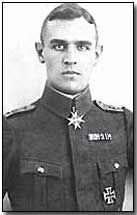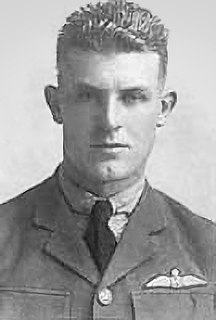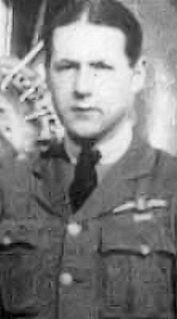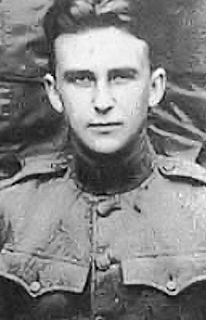Related Research Articles

Franz Büchner PlM was one of the most successful German fighter aces of the First World War, shooting down 40 enemy aircraft. He began his military career as a 16-year-old infantryman. His doughty exploits earned him a battlefield commission just after his 18th birthday, in early 1916. After being wounded and invalided from the infantry, he joined the Imperial German Air Service. Once he progressed to become a fighter pilot flying a Fokker D.VII, he initially struggled to gain his first aerial victories. Something clicked after his fifth victory, and he began to regularly shoot down enemy airplanes, scoring 35 victories between 1 July and 22 October 1918. Most notably, he shot down four SPADs on 26 September. He survived the war, but died in action in 1920 while combating communist revolutionaries near Leipzig.
Paul Billik was a German World War I fighter ace credited with 31 victories. He was killed in a flying accident while pioneering civil aviation.

Lieutenant Harold Koch Boysen was a World War I flying ace credited with five aerial victories.

Captain Harold Robert Buckley was a World War I flying ace credited with five aerial victories.

Arthur Edmund Easterbrook was an American aviator who started his career as a World War I flying ace credited with five aerial victories. During World War II, he held several important positions in the U. S. Army Air Corps.
John Harry McNeaney was a Canadian First World War flying ace, flying with both the Royal Flying Corps and the Royal Air Force. He was credited with five aerial victories. John McNeaney was the only Canadian Sopwith Dolphin Ace.
Lieutenant Archibald Buchanan was a World War I flying ace credited with seven aerial victories.

Lieutenant Jesse Orin Creech was a World War I flying ace credited with seven aerial victories. He shot down the final victory of the war for his squadron.

Lieutenant Wilbert Wallace White was a World War I flying ace credited with eight aerial victories. He was recommended for the Medal of Honor for his heroic self-sacrifice.

Brigadier General Martinus Stenseth began his career in the Minnesota National Guard in June 1916, before the United States entered World War I. He remained in the military as a professional soldier, rising to the rank of brigadier general.

Captain Harold Albert Kullberg was a World War I flying ace credited with 19 aerial victories. Though he scored his victories with the Royal Air Force, Kullberg was an American citizen. He was rejected for training as an American pilot because he was too short. He then joined the Royal Flying Corps in Canada on 7 August 1917.
Lieutenant Eugene Seeley Coler (1896-1953) was an American World War I flying ace who served in the British Royal Flying Corps and Royal Air Force. He was credited with 16 aerial victories.

Captain James William Pearson was an American World War I flying ace credited with twelve aerial victories while flying for the British Royal Air Force.

Lieutenant William Portwood Erwin was an American World War I flying ace credited with eight aerial victories. On 19 August 1927, he disappeared during the Dole Air Race from Oakland, California to Hawaii.
Franz Xaver Danhuber was a German World War I flying ace credited with eleven aerial victories.

Lieutenant Kenneth Russell Unger was an American World War I flying ace credited with fourteen aerial victories. His candidacy rejected by his own nation, Unger applied to the British Royal Flying Corps for military pilot training in June 1917. Once trained, he was assigned to the Royal Naval Air Service (RNAS). As the RNAS was merged into the Royal Air Force, Unger scored his aerial victories between 26 June and 1 November 1918. In later life, Unger remained involved in aviation and served again during World War II. He also joined the U.S. Navy Reserves, rising to the rank of rear admiral.

Captain Emile John Lussier was an American flying ace during World War I. He was credited with eleven confirmed aerial victories while flying with the Royal Air Force.

Lieutenant Howard Burdick DSC DFC was an American World War I flying ace credited with eight confirmed aerial victories.

Paul Frank Baer was an American fighter pilot for the United States Army Air Service in World War I. He was credited with nine confirmed victories and seven unconfirmed victory claims, making him the first flying ace in American military aviation history.
Merrill Samuel Taylor was a Canadian flying ace of the First World War. He was credited with seven aerial victories while flying a Sopwith Camel fighter for the Royal Naval Air Service and, later, the Royal Air Force. He touched off the air battle that resulted in the death of the war's leading ace, Manfred von Richthofen, on 21 April 1918. On 2 May 1918, he killed German ace Hans Weiss for his fifth victory. Taylor was killed in action by Franz Büchner on 7 July 1918.
References
American Aces of World War 1 Harry Dempsey. Osprey Publishing, 2001. ISBN 1-84176-375-6, ISBN 978-1-84176-375-0.